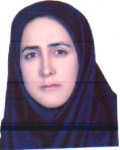| Authors | M. Sarabadan, H. Bashiri, S. M. Mousavi |
|---|---|
| Journal | CLAY MINER |
| IF | 1.787 |
| Paper Type | Full Paper |
| Published At | 2019-09-22 |
| Journal Grade | Scientific - research |
| Journal Type | Electronic |
| Journal Country | United Kingdom |
| Journal Index | SCOPUS ,JCR |
Abstract
A zeolite–montmorillonite (zeolite-Mt) nano-adsorbent was prepared by calcination at 600°C. The synthesized nano-adsorbent was tested for removal of a toxic and cationic dye (crystal violet) from water, and it was characterized by various techniques. The effects of variables such as pH, temperature, adsorbent dosage and initial dye concentration on the removal efficiency of the dye were investigated by response surface methodology (RSM). Experimental conditions were optimized by RSM to achieve the maximum dye removal efficiency. Optimum conditions for maximum removal of dye were obtained at pH 9, temperature of 25°C, adsorbent dosage of 2 g L−1 and initial dye concentration of 40 mg L−1. Under these conditions, the maximum removal efficiency obtained was 99.9%. Various isotherms were applied to study adsorption equilibrium, and among of them, the Freundlich isotherm provided the best fit. In addition, the fractal-like integrated kinetic Langmuir model was the most appropriate among several kinetic models. The thermodynamic parameters were also determined. The zeolite-Mt prepared under optimum conditions displayed a greater adsorption capacity than activated carbon manufactured by Merck and various adsorbents.
